Machu Picchu, the Lost City of the Incas, is a fascinating archaeological site nestled high in the Andes Mountains of Peru. With its intricate stone structures, breathtaking views, and rich history, it is no wonder that Machu Picchu has captured the imaginations of travelers and historians alike. Exploring this ancient wonder is like stepping back in time, as you uncover the secrets of an empire that once ruled over the Andean region. Join us on a journey to discover the captivating history, significance, and breathtaking beauty of Machu Picchu.
Contents
- The History of Machu Picchu
- Significance and Architecture
- Getting to Machu Picchu
- Exploring Machu Picchu
- Cultural Significance and Preservation Efforts
- Conclusion
-
Frequently Asked Questions
- 1. How old is Machu Picchu?
- 2. Why was Machu Picchu abandoned?
- 3. How did Machu Picchu remain hidden for so long?
- 4. Is Machu Picchu difficult to reach?
- 5. Can I visit Machu Picchu without a guide?
- 6. How long should I allocate for exploring Machu Picchu?
- 7. Can I climb Huayna Picchu?
- 8. Can Machu Picchu be visited year-round?
- 9. Are there any restrictions or rules when visiting Machu Picchu?
- 10. How can I contribute to the preservation efforts of Machu Picchu?
- References
-
Frequently Asked Questions
- What is the best time to visit Machu Picchu?
- How long does it take to explore Machu Picchu?
- Are there any restrictions or regulations for visiting Machu Picchu?
- Is it necessary to book tickets in advance?
- Can I hike the Inca Trail to reach Machu Picchu?
- Are there alternative routes to reach Machu Picchu?
- Do I need to be physically fit to visit Machu Picchu?
- Can I hire a local guide at Machu Picchu?
- What should I wear and bring when visiting Machu Picchu?
- Are there any safety precautions I need to be aware of when visiting Machu Picchu?
- References
- Read More
The History of Machu Picchu
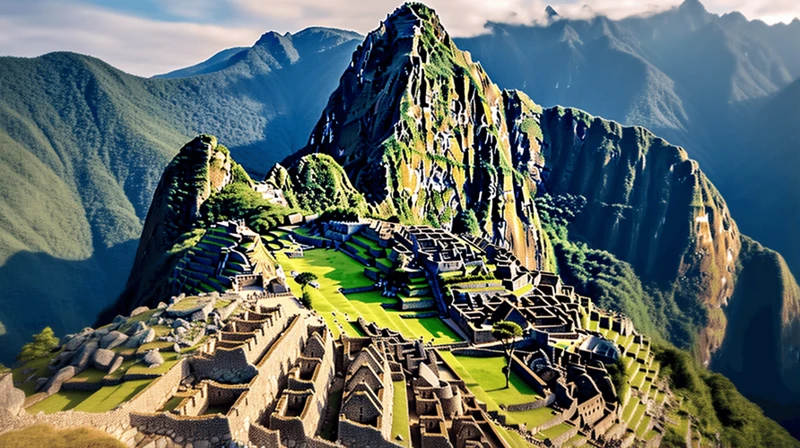
Machu Picchu holds a rich and mysterious history that begins with the Inca Empire. The Inca civilization, known for their extraordinary architectural abilities and advanced knowledge of agriculture, thrived in the Andean region of South America from the 13th to the 16th century. During its peak, the Inca Empire stretched over 2,500 miles and encompassed modern-day Peru, Ecuador, Bolivia, and parts of Chile and Argentina. However, the exact purpose of Machu Picchu remains a subject of debate among historians. Some suggest that it served as a secret retreat for Inca rulers, while others believe it was a sacred site dedicated to religious ceremonies and astronomical observations. The city was built with precision and intricate engineering, utilizing the natural landscape and incorporating carefully constructed terraces, underground drainage systems, and stone structures that have withstood the test of time. Despite its grandeur and significance, Machu Picchu was abandoned and remained hidden from the outside world for centuries, until its rediscovery in 1911 by American archaeologist Hiram Bingham. This groundbreaking find introduced the world to the wonders of Machu Picchu, unlocking a treasure trove of knowledge about the Inca civilization and shedding light on their remarkable accomplishments.
The Inca Empire
The Inca Empire, one of the most remarkable civilizations in history, was a highly organized and sophisticated society that thrived in the Andean region of South America. With their capital located in Cusco, Peru, the Incas built a vast empire that spanned a large portion of the western coast of South America. They were skilled engineers, constructing an extensive network of roads and bridges that connected their territories. Their agricultural system was advanced, utilizing terrace farming techniques to cultivate crops in the rugged terrain of the Andes. The Incas worshiped nature and believed in the sacredness of the mountains, rivers, and animals. They had a complex religious and political system, with the ruler known as the Sapa Inca considered as both a political and religious leader. The Inca Empire reached its peak during the 15th century under the reign of Emperor Pachacuti, who expanded the empire through military conquests. However, the empire was relatively short-lived and came to an abrupt end with the arrival of Spanish conquistadors led by Francisco Pizarro. The Incan civilization left behind a remarkable legacy, with Machu Picchu standing as a testament to their ingenuity and cultural significance. To delve deeper into the lore and mystique of ancient civilizations, you can explore the fascinating world of /divination-prophecies-mesopotamian-mythology/.
The Rediscovery of Machu Picchu
The rediscovery of Machu Picchu in 1911 by Hiram Bingham was a momentous event that unveiled the mystical secrets of this hidden city. Bingham, a Yale University professor and explorer, embarked on a journey to find the forgotten Inca ruins while in search of Vilcabamba, the last Inca stronghold. Led by local farmers, he stumbled upon the overgrown ruins of Machu Picchu, blanketed by dense vegetation. The sight was awe-inspiring, with the mist-shrouded mountains providing a dramatic backdrop to the ancient structures. Bingham’s exploration and subsequent documentation of the site captured the attention of the world, sparking widespread interest in the history and wonders of the Inca civilization. The rediscovery of Machu Picchu not only shed light on the architectural and engineering genius of the Incas but also fueled the imagination of scholars and adventurers alike. Today, visitors from all over the globe flock to Machu Picchu, eager to experience the awe and wonder that Bingham first encountered over a century ago, and to unravel the mysteries of this extraordinary archaeological masterpiece.
Significance and Architecture
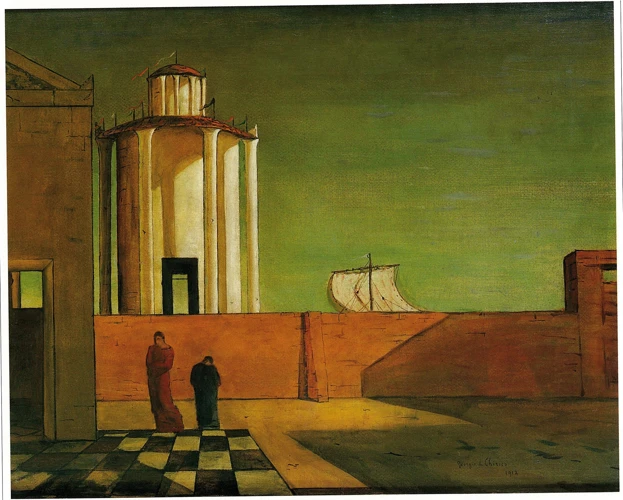
The Significance and Architecture of Machu Picchu are awe-inspiring. This ancient city is strategically located on a mountain ridge, offering stunning panoramic views of the surrounding valleys and peaks. The site was carefully chosen and designed to be in harmony with the natural landscape, reflecting the Inca’s deep respect for the environment. The sacredness of the site is evident in its layout, which incorporates the surrounding mountains and follows the flow of natural energy lines. The architecture of Machu Picchu showcases the Inca’s exceptional engineering skills. The stone structures, with their precise fitting blocks, demonstrate the mastery of stonecutting techniques. The use of trapezoidal doorways and windows not only adds to the aesthetic appeal but also serves functional purposes, such as earthquake resistance and improved ventilation. The Temple of the Sun stands out with its perfectly carved stone walls and its alignment with the solstices. The Intihuatana Stone, also known as the “hitching post of the sun,” is a unique architectural feature that served as a sundial and ceremonial site for the Inca’s astronomical observations. The entire city is a testament to the advanced knowledge and ingenuity of the Inca civilization. Machu Picchu’s architectural marvels continue to amaze visitors and researchers to this day, providing valuable insights into the Inca’s cultural and technological achievements.
The Sacred Landscape
The sacred landscape surrounding Machu Picchu is a testament to the Inca’s deep connection with nature and their reverence for the mountains and celestial bodies. Situated amidst the rugged peaks of the Andes, the city is surrounded by awe-inspiring mountains that hold spiritual significance. One of the most prominent mountains is Huayna Picchu, which rises dramatically behind Machu Picchu, offering breathtaking panoramic views of the site. It is believed to have been a sacred place of ritual and worship. Another notable mountain is the imposing peak of Salkantay, revered as a deity representing fertility and agriculture. The alignment of these mountains, their interplay with the sun and stars, and the sacred rivers flowing through the valley, all demonstrate the Inca’s profound understanding of astronomy and their ability to harmonize human existence with the natural world. The Incas were known to observe solstices, equinoxes, and other astronomical events, aligning their agricultural and religious practices accordingly. The sacred landscape of Machu Picchu invites visitors to contemplate the intricate relationship between man and nature, and to witness the ingenuity of a civilization that embraced the cosmic forces shaping their lives.
The Architecture of Machu Picchu
The architecture of Machu Picchu is an astounding testament to the engineering prowess of the Inca civilization. The layout of the city is meticulously planned, with buildings strategically positioned to harmonize with the natural contours of the landscape. One notable feature is the precise stonework that characterizes the structures. The stones were carved with remarkable precision, fitting together seamlessly without the use of mortar. This technique, known as ashlar masonry, showcases the advanced craftsmanship of the Incas. The city consists of various types of buildings, including temples, houses, storage structures, and terraces. The temples, such as the Temple of the Sun, are particularly awe-inspiring, adorned with intricate carvings and featuring delicate stonework. The urban planning of Machu Picchu is also noteworthy, with distinct zones dedicated to different functions. The agricultural terraces, for instance, provided a means to cultivate crops on the steep slopes, while the residential areas were designed to accommodate the needs of the Inca people. The artistry and ingenuity of the architecture at Machu Picchu not only reflect the skills of the Inca craftsmen but also demonstrate their deep reverence for the natural world and their desire to harmonize with the environment.
Getting to Machu Picchu
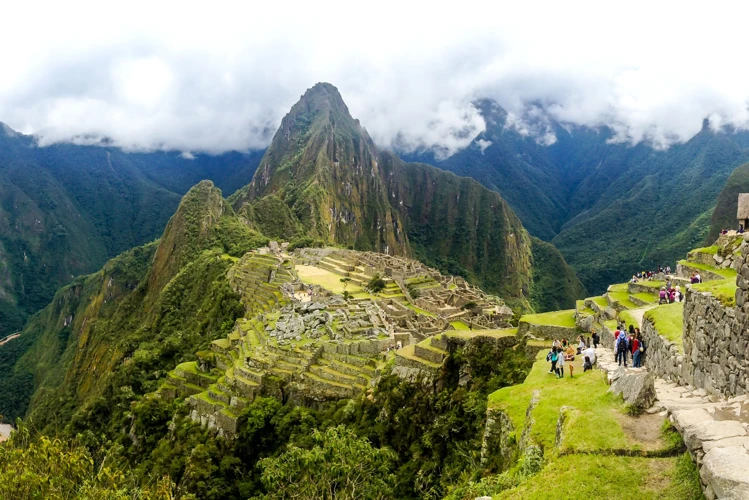
Reaching Machu Picchu is an adventure in itself, with various routes and transportation options. The journey typically begins in Cusco, a city located in the southeastern region of Peru. As the gateway to Machu Picchu, Cusco offers several transportation options to get to the ancient citadel. The most popular and iconic route is the Inca Trail, a challenging trek that spans approximately 26 miles and takes around four days to complete. This trail allows trekkers to immerse themselves in the stunning Andean scenery, passing through diverse landscapes and visiting other archaeological sites along the way. However, due to its popularity and limited permits, it is essential to book the Inca Trail well in advance. For those looking for alternative routes, there are various options to choose from, such as the Salkantay Trek, Lares Trek, or the scenic train journey from Cusco to Aguas Calientes, the town located at the base of Machu Picchu. Regardless of the chosen route, arriving at Machu Picchu is a momentous experience, as you step foot into a world lost in time, surrounded by awe-inspiring beauty and ancient history.
Arriving in Cusco
Arriving in Cusco, the gateway to Machu Picchu, is an adventure in itself. The city is located in southeastern Peru and is often the starting point for those embarking on a journey to explore the ancient ruins. Cusco, once the capital of the Inca Empire, is rich in history and offers a fascinating blend of Inca and Spanish colonial architecture. As you walk through the city’s cobblestone streets, you’ll be immersed in a vibrant atmosphere, with colorful markets, lively plazas, and charming colonial buildings. To acclimate to the high altitude, it is recommended to spend a few days in Cusco before beginning your Machu Picchu expedition. During your time in Cusco, take the opportunity to explore the city’s many attractions, such as the magnificent Qurikancha temple, the impressive Sacsayhuaman fortress, and the bustling San Pedro Market. Indulge in the local cuisine, savoring dishes like ceviche and alpaca steak, as you prepare for the awe-inspiring journey ahead. Cusco also serves as a base for various trekking routes to Machu Picchu, including the famous Inca Trail.
The Inca Trail
The Inca Trail is a renowned and popular route for travelers who want to experience the journey to Machu Picchu on foot. This ancient trail, built by the Incas centuries ago, stretches for approximately 26 miles (42 kilometers) and winds through diverse landscapes, including Andean mountain passes, lush cloud forests, and enchanting Inca ruins. Hiking the Inca Trail not only offers breathtaking natural scenery but also provides a unique opportunity to immerse oneself in the rich history and culture of the region. Along the way, trekkers will encounter archaeological sites such as Wiñay Wayna, where you can witness impressive Inca terraces and marvel at the ancient craftsmanship. The trail culminates in the awe-inspiring Inti Punku, also known as the Sun Gate, where hikers are rewarded with their first glimpse of the magnificent Machu Picchu. It is important to note that the Inca Trail requires a permit and is limited to a certain number of hikers each day, so it is crucial to plan ahead and make reservations in advance. Embarking on this iconic journey is not only physically demanding but also spiritually rewarding, as hikers follow in the footsteps of the ancient Incas, connecting with the past and embracing the wonders of the present. For those seeking an unforgettable adventure, the Inca Trail offers an unrivaled experience that will leave a lasting impact.
Alternative Routes
When it comes to reaching Machu Picchu, the Inca Trail is undoubtedly the most popular and iconic route. However, for those seeking alternative ways to experience this magnificent wonder, there are several options available. One alternative route is the Salkantay Trek, which takes you through diverse landscapes, including snowy mountain passes and lush cloud forests. This challenging trek offers stunning vistas of the Salkantay Mountain, towering at an impressive 20,574 feet (6,271 meters). Another option is the Lares Trek, which allows you to immerse yourself in the vibrant culture of local Andean communities. This route takes you through picturesque valleys, past crystal-clear lakes, and offers opportunities to interact with Quechua-speaking villagers. For those with limited time or physical abilities, the train is a convenient and comfortable option. The PeruRail and IncaRail services offer scenic train rides from Cusco to Machu Picchu, allowing you to admire the breathtaking landscapes along the way. Some travelers also opt for a combination of hiking and train rides to get a taste of both worlds. Whichever alternative route you choose, you will still have the chance to appreciate the natural beauty and awe-inspiring surroundings as you make your way to the Lost City of the Incas.
Exploring Machu Picchu
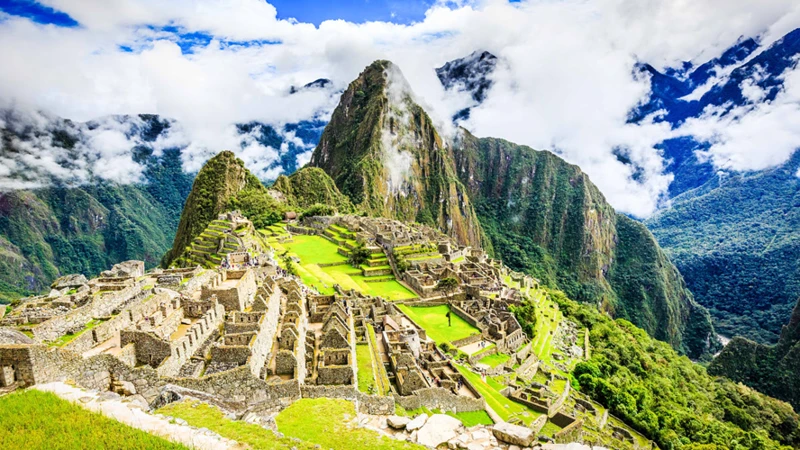
Exploring Machu Picchu is an awe-inspiring experience that allows visitors to immerse themselves in the architectural wonders and breathtaking landscapes of this ancient site. As you enter the city, the first stop on your journey is the Main Plaza. This expansive open space was the heart of Machu Picchu, serving as a gathering place for the Inca people. Next, make your way to the Temple of the Sun, an extraordinary structure dedicated to the Inca sun god, Inti. Here, you can marvel at the precision stonework and observe the strategic alignment with the sun during solstices and equinoxes, highlighting the Inca’s astronomical knowledge. Nearby, you’ll discover the Intihuatana Stone, a unique granite rock that served as a ceremonial site and possibly as a sundial. It is believed that this sacred stone held spiritual and religious significance for the Inca people, aligning with their spiritual beliefs and practices. Continuing your exploration, you’ll come across the Temple of the Three Windows, featuring three trapezoidal windows that offer panoramic views of the surrounding mountains and valleys. The precise craftsmanship of the stone walls and the strategic positioning of the windows showcase the Inca’s engineering prowess. For those seeking a bit of adventure, make sure to visit the Inca Bridge, a daring pathway built into a sheer cliff face. This marvel of engineering was likely used as a secret entrance or defense mechanism during the Inca Empire. As you traverse this narrow path, you’ll be rewarded with breathtaking views and a sense of exhilaration. Each step within the ancient city unveils a new layer of history and beauty, inviting visitors to appreciate the ingenuity and legacy of the Inca civilization. Exploring Machu Picchu offers an opportunity to connect with the past, marvel at human achievements, and experience the powerful aura that still lingers within these sacred ruins.
The Main Plaza
The Main Plaza, also known as the Sacred Plaza, is the central hub of activity within Machu Picchu. This expansive open space is surrounded by impressive stone walls and features several significant structures. One notable feature of the Main Plaza is the Intihuatana Stone, a carefully carved stone pillar that is believed to have served as an astronomical and ritualistic device by the Incas to measure the movement of the sun. The Main Plaza also houses the Temple of the Three Windows, an architectural marvel with three large trapezoidal windows that provide stunning views of the surrounding mountains and valleys. Another prominent structure in the Main Plaza is the Temple of the Sun, which is dedicated to the worship of Inti, the Inca sun god. This temple boasts remarkable stonework and a semi-circular niche that is illuminated by the rising sun during the winter solstice, a testament to the Inca’s advanced understanding of astronomy and alignment with celestial events. The Main Plaza is a captivating space that offers a glimpse into the spiritual and ceremonial practices of the Incas. It serves as a point of convergence, where visitors can admire the impressive craftsmanship and soak in the awe-inspiring natural beauty that surrounds Machu Picchu.
The Temple of the Sun
The Temple of the Sun is a remarkable structure within Machu Picchu that highlights the deep religious significance of the site. Located in the Sacred District, this temple is believed to have served as an important ceremonial space for the Inca people. The temple’s architectural design showcases the Inca’s advanced engineering skills, with precision-cut stones fitting together seamlessly. One of the most remarkable features of this temple is its strategic placement to align with the sun during the solstices. During the June solstice, the sun’s rays pass through a strategically placed window and illuminate a sacred stone within the temple. This celestial alignment is thought to have held great spiritual and agricultural significance for the Inca, as it marked the changing seasons and agricultural cycles. Archaeological excavations have also uncovered artifacts and offerings within the temple, suggesting that it was a place of worship and devotion. The Temple of the Sun stands as a testament to the Inca’s deep connection to nature and their mastery of astronomical observations. It offers visitors a unique opportunity to witness the intricate fusion of architecture and spirituality that characterized the Inca civilization. To learn more about the fascinating connection between ancient civilizations and celestial observations, you can read about the “Ophiuchus Effect” and the shifting perspectives in astrology.
The Intihuatana Stone
The Intihuatana Stone is one of the most intriguing and enigmatic features of Machu Picchu. This ancient stone, believed to have served as a solar clock or calendar, has been the subject of much speculation and fascination. The word “Intihuatana” translates to “hitching post of the sun” in Quechua, the language of the Inca civilization. This stone pillar is meticulously carved to align with the movements of the sun during the solstices, marking the changing seasons and celestial events with precision. The Intihuatana Stone was believed to have spiritual significance for the Inca people, acting as a connection between the physical world and the spiritual realm. The stone’s positioning and alignment are thought to have played a role in religious rituals and ceremonies associated with the worship of the sun and other celestial bodies. Unfortunately, many of the original Intihuatana Stones were destroyed by the Spanish conquistadors in their quest to eradicate Inca religious practices. Today, only a handful of these sacred stones remain, preserved as important cultural artifacts of a civilization that revered nature and the cosmos. Visiting the Intihuatana Stone at Machu Picchu offers a unique opportunity to witness the ingenuity and spiritual wisdom of the Inca people, providing a glimpse into their worldview and their deep connection to the universe. To learn more about the fascinating connections between ancient civilizations and celestial events, read our article on Unveiling Zodiac Secrets.
The Temple of the Three Windows
The Temple of the Three Windows is one of the most striking and well-preserved structures in Machu Picchu. Located in the urban section of the ancient city, this temple is notable for its unique architectural design and its strategic position overlooking the surrounding landscape. As the name suggests, the temple features three trapezoidal windows, each adorned with intricately carved stone frames. The windows provide a breathtaking view of the mountains and valleys, allowing visitors to appreciate the awe-inspiring natural beauty that surrounds Machu Picchu. These windows also served a functional purpose, as they were strategically aligned with the solstices, likely used for astronomical observations and rituals associated with the Inca’s deep connection to the celestial realm. The temple’s layout and design are a testament to the Inca’s masterful masonry skills and their profound understanding of both aesthetics and engineering. The intricacy and precision of the stonework, along with the incorporation of trapezoidal shapes, showcase the Inca’s attention to detail and their reverence for harmony and balance. The Temple of the Three Windows provides a captivating glimpse into the architectural genius and spiritual significance of Machu Picchu, making it a must-visit site for anyone exploring this ancient wonder.
(Note: No relevant anchor text available for insertion of a link.)
The Inca Bridge
The Inca Bridge is a remarkable feat of engineering found within the Machu Picchu archaeological site. This ancient suspension bridge, made primarily of woven grass, was crucial for the Inca people to navigate their vast network of roadways. Located in a strategic position, the bridge spans a deep gorge, providing a crucial link between different sections of the city. The Inca Bridge showcases the ingenuity and resourcefulness of the Inca civilization, as they were able to construct a bridge that could support the weight of people and goods, while also being easily dismantled to deter potential invaders. The bridge was designed to be passable only with the use of a large wooden plank that connected the two ends. This clever design allowed the Inca to safely cross the precarious chasm and protect their city from any possible threats. Today, visitors can marvel at the remnants of this ancient bridge, a testament to the advanced engineering skills of the Inca people. It serves as a tangible reminder of the vast achievements and innovation of this ancient civilization.
Cultural Significance and Preservation Efforts
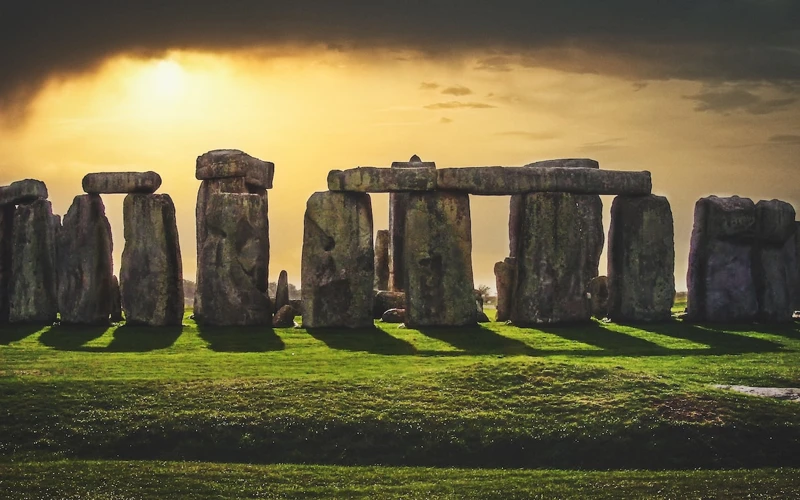
The cultural significance of Machu Picchu cannot be overstated. This ancient marvel serves as a testament to the ingenuity and skill of the Inca civilization. The site, with its breathtaking architecture and awe-inspiring landscape, continues to captivate visitors and researchers alike. Machu Picchu was recognized as a UNESCO World Heritage Site in 1983, highlighting its universal value and the need for its preservation. Efforts have been made to protect the site from degradation and damage caused by tourism and environmental factors. Regulations and restrictions are in place to ensure that visitors treat the site with respect and do not disturb the delicate balance of the ruins. Additionally, ongoing research and conservation efforts strive to understand the site better and implement sustainable practices for its long-term preservation. Organizations such as the Peruvian government and international institutions collaborate to safeguard Machu Picchu for future generations to appreciate and study its remarkable history. By valuing and protecting this cultural gem, we can continue to learn from and be inspired by the Lost City of the Incas.
Conclusion
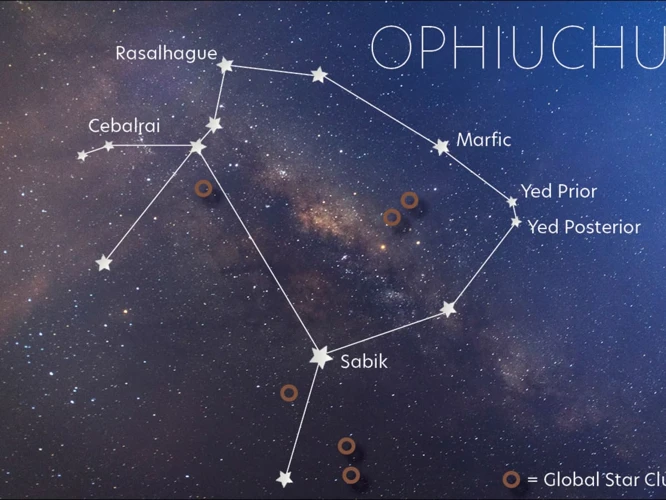
In conclusion, exploring Machu Picchu is a captivating journey that immerses visitors in the rich history and cultural significance of the Inca civilization. The discovery of this hidden city has provided valuable insights into the architectural prowess and innovative techniques employed by the Incas. It is a testament to their advanced knowledge of engineering, astronomy, and agriculture. The sacred landscape and remarkable architecture of Machu Picchu continue to inspire awe and admiration, attracting travelers from around the world. The preservation efforts put in place ensure that future generations can experience the magic and wonder of this ancient site. So, whether you trek the Inca Trail or choose an alternative route, a visit to Machu Picchu is an unforgettable experience that will leave you with a deep appreciation for the ingenuity and cultural legacy of the Incas. Embark on this journey and witness the splendor of Machu Picchu for yourself, discovering a world lost in time.
Frequently Asked Questions

1. How old is Machu Picchu?
Machu Picchu is estimated to have been built in the mid-15th century, around the height of the Inca Empire.
2. Why was Machu Picchu abandoned?
The exact reasons for the abandonment of Machu Picchu remain uncertain. Some theories suggest that it was abandoned due to the arrival of Spanish conquistadors, while others propose that it was due to civil unrest or the outbreak of diseases.
Machu Picchu remained hidden from the outside world because it was built in a remote location and was nestled high in the mountains, making it difficult to access. Additionally, the dense vegetation surrounding the site helped protect it from discovery.
4. Is Machu Picchu difficult to reach?
Reaching Machu Picchu requires some effort, as it involves traveling to the city of Cusco and then either hiking the Inca Trail or taking alternative routes, such as the Salkantay Trek or the train. However, the journey is well worth it for the awe-inspiring experience of visiting this ancient wonder.
5. Can I visit Machu Picchu without a guide?
While it is not mandatory to have a guide to visit Machu Picchu, it is highly recommended. Guides provide valuable insights into the history, culture, and significance of the site, enhancing your overall experience.
6. How long should I allocate for exploring Machu Picchu?
A typical visit to Machu Picchu can range from a few hours to a full day. It is advised to allocate enough time to explore the main sites, soak in the breathtaking views, and take in the spiritual ambiance of this remarkable place.
7. Can I climb Huayna Picchu?
Yes, climbing Huayna Picchu, the iconic mountain that overlooks Machu Picchu, is possible. However, access is limited, and a separate ticket is required. It is important to note that the climb is steep and challenging, but the panoramic view from the top is truly rewarding.
8. Can Machu Picchu be visited year-round?
Yes, Machu Picchu is open for visitors year-round. However, it is recommended to visit during the dry season (May to September) to avoid heavy rainfall and potentially muddy trails.
9. Are there any restrictions or rules when visiting Machu Picchu?
Yes, there are certain restrictions and rules to ensure the preservation of Machu Picchu. These include not touching the walls or archaeological structures, not bringing in single-use plastics, and following designated paths and trails. It is essential to respect the site and its cultural significance.
10. How can I contribute to the preservation efforts of Machu Picchu?
You can contribute to the preservation efforts of Machu Picchu by respecting the rules and guidelines, practicing sustainable tourism, and supporting local initiatives and organizations that work towards its conservation. Additionally, being mindful of your environmental impact, such as minimizing waste and using eco-friendly products, can also make a difference.
References
- Exploring Machu Picchu Lost City of the Incas – CLAMS
- Lost City of the Incas. The Story of Machu Picchu and its …
- Discover the Mysteries of Peru’s Machu Picchu, Lost City …
Frequently Asked Questions

What is the best time to visit Machu Picchu?
The best time to visit Machu Picchu is during the dry season, which typically runs from May to September. The weather is generally clear and sunny during this time, making it ideal for exploring the ruins.
How long does it take to explore Machu Picchu?
The duration of your visit to Machu Picchu can vary depending on your interests and the activities you choose to engage in. On average, most visitors spend around 4-5 hours exploring the site.
Are there any restrictions or regulations for visiting Machu Picchu?
Yes, there are certain restrictions and regulations in place to protect the site and preserve its cultural significance. Visitors are required to be accompanied by a licensed tour guide when exploring Machu Picchu, and there are limitations on the number of daily visitors allowed.
Is it necessary to book tickets in advance?
Yes, it is highly recommended to book your tickets well in advance to ensure availability. The number of daily visitors to Machu Picchu is limited, and tickets can sell out quickly, especially during the peak tourist season.
Can I hike the Inca Trail to reach Machu Picchu?
Yes, the Inca Trail is a popular route for reaching Machu Picchu. However, it requires a permit and advanced planning as there is a limit on the number of hikers allowed per day. It is advisable to book your Inca Trail permit several months in advance.
Are there alternative routes to reach Machu Picchu?
Yes, there are alternative routes for those who cannot or prefer not to hike the Inca Trail. These include the Salkantay Trek, Lares Trek, and the Inca Jungle Trail. Each route offers a unique experience and allows you to explore the surrounding landscapes.
Do I need to be physically fit to visit Machu Picchu?
While visiting Machu Picchu does not require intense physical activity, it does involve some walking and climbing of stairs. It is recommended to be in good physical condition to fully enjoy and explore the site.
Can I hire a local guide at Machu Picchu?
Yes, there are local guides available at Machu Picchu that you can hire. Having a guide can enhance your experience as they can provide you with historical and cultural insights, as well as navigate you through the site efficiently.
What should I wear and bring when visiting Machu Picchu?
It is advisable to wear comfortable clothing and footwear suitable for walking. Additionally, it is recommended to bring sunscreen, a hat, a reusable water bottle, insect repellent, and a camera to capture the stunning views and moments.
Are there any safety precautions I need to be aware of when visiting Machu Picchu?
While Machu Picchu is generally considered safe for visitors, it is important to take certain precautions. Stay hydrated, use sunscreen, and be aware of your surroundings. It is also wise to avoid climbing on the ruins or touching the delicate structures to preserve their integrity.
References
- Machu Picchu Peru: The lost city of the Incas
- Exploring Machu Picchu, Lost City of the Incas
- Lost City of the Incas. The Story of Machu Picchu and its …







